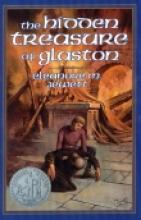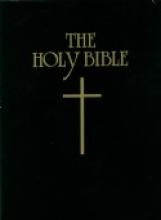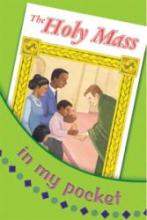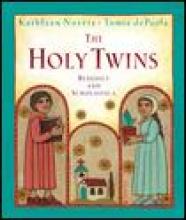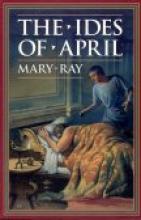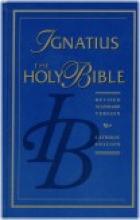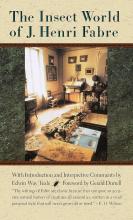No name
The Hidden Treasure of Glaston
Life gets more interesting when Hugh teams up with Dickon, a young oblate at the monastery, to investigate secret underground treasure caves. A mystery unfolds envolving the monastery, King Arthur, Joseph of Arimathea and the Holy Grail.
How neat to read a Catholic adventure story for children! While reading an engrossing, fast paced story, they are also given a positive impression of piety and monastic life and the importance of amending one's life (the side-plot regarding his father which ends happily).
I also like the fact that the book includes "a word to those who like to ask of a story, especially one with an historical background, 'Is it true?'" The story, as much as possible, is rooted in historical truths. Although I have not read it yet, The Flowering Hawthorn (published by Neumann Press) appears to cover some of the historical background that this story is based on and might make an interesting follow-up book.
The Hidden Treasure of Glaston is a Newbery Honor book from 1946. There are some similarities to The Door in the Wall by Marguerite de Angeli, but I think this book is more interesting and fast-paced.
This book was donated for review by Bethlehem Books.
The History of the Papacy
This CD ROM provides a complete and orthodox look at the History of the Papacy in a professional and attractive interactive format. Each of the Popes from St. Peter through Pope John Paul II are presented with a short biography (from one or two paragraphs to one or two pages each - the text is taken from The Popes Through the Ages by Joseph S. Brusher, S.J. - 1959), numerous images (portraits, coins, commemorative stamps, statuary) and the coat of arms. In addition, several video clips each are offered for most of the Popes of the 20th century (most are without audio) and separate audio clips are offered for several 20th century popes as well.
The history presented is very Catholic and very balanced (for example, both St. Pius X and Pope John Paul II are greatly admired and favorably presented). Vatican II is presented as orthodox, but frequently misinterpreted and even abused in its application.
An appendix includes several histories. First - a history of the Crusades. This text is taken from the Catholic Encyclopedia (1908) and includes several traditional images. Second - a history of the Ecumenical Councils with a brief description of each, illustrations of a number of the councils and a video clip from Vatican II. Finally - a listing of the anti-Popes (false claimants to the Papacy).
This is a really nice resource and history supplement. It's nice to have one that is so beautiful and orthodox.
The Holy Bible: Douay Rheims Version
The Douay Rheims Bible is supposed to be the most accurate, Catholic, translation of the Bible available in the English language. The Old Testament was translated into English in 1609 and the New Testament in 1582 and revised in its entirety (and "diligently] compared with the Latin Vulgate") by Bishop Richard Challoner from 1749-1752. Although the some of the language would be considered archaic today (lots of "thees" and "thous") but it really is beautiful. Although you will probably want a more modern translation as well, the Douay Rheims is especially good for memorizing passages and as a reference for points (and discussions) in which accuracy is especially important. TAN Books also publishes the Douay New Testament in a less expensive edition.
Sample passages: Genesis 1:1-3In the beginning God created heaven, and earth. And the earth was void and empty, and darkness was upon the face of the deep; and the spirit of God moved over the waters. And God said: Be light made. And light was made.
Psalm 26: 1-2The Lord is my light and my salvation, whom shall I fear? The Lord is the protector of my life: of whom shall I be afraid? Whilst the wicked draw near against me, to eat my flesh. My enemies that trouble me, have themselves been weakened, and have fallen.
John 1: 1-5In the beginning was the Word, and the Word was with God, and the Word was God. The same was in the beginning with God. All things were made by him: and without him was made nothing that was made. In him was life, and the life was the light of men. And the light shineth in darkness, and the darkness did not comprehend it.
Imprimatur 1899
The Holy Mass in My Pocket
The Holy Twins: Benedict and Scholastica
Monastic life and St. Benedict's rule are presented in a gentle and very positive manner. The end of the story has a detailed explanation of the history of the rule of St. Benedict. Here is a nice little sampling: "Many people who are not monks or nuns have found that Benedict's Rule offers good, practical advice and spiritual counsel for getting along with others in a family, on the job, or in a church community." This page is followed by one illustrating some examples from his Rule.
The House of Sixty Fathers
The story is beautiful and thoughtful and gives a picture of life in an oft-forgotten portion of the World War II "drama". We Americans tend to focus on the stories of Europe and the Holocaust. Appropriate for ages ten and up.
The Ides of April
The Ides of April is an intriguing book set in 62 A.D. It's a classic murder mystery. The author, Mary Ray, paints a vivid picture of life in ancient Rome. Students will gain much technical information about the time period - social status, architecture, religion, laws, the games, and the working of a household.
Though the book is recommended for children "14 years and up", younger children would enjoy it as a read-aloud. It's on the "highly-recommended list" at our house.
Copyrights 1974/1999
The Ignatius Bible
This is the best translation available in "modern" English (without the "thees" and "thous" found in the Douay Rheims translation). For many of us today, this language is more familiar and comfortable and is probably easier for small children to understand. We use both translations in our home and find this one a little better for reading aloud to the family. It does not contain the "feminized language" (a.k.a. "inclusive language") found in most of the modern translations of the Holy Bible. The feminized language found in most modern translations affects not only the beauty of the language, but even the subtle meanings of passages such as some Psalms where the "he" or "him" actually refers to Our Lord.
Sample Passages: Genesis 1: 1-3In the beginning God created the heavens and the earth. The earth was without form and void, and darkness was upon the face of the deep; and the Spirit of God was moving over the face of the waters. And God said, "Let there be light"; and there was light.
Psalm 27 (26): 1-2The Lord is my light and my salvation; whom shall I fear? The Lord is the stronghold of my life; of whom shall I be afraid? When evildoers assail me, uttering slanders against me, my adversaries and foes, they shall stumble and fall.
John 1: 1-5In the beginning was the Word, and the Word was with God, and the Word was God. He was in the beginning with God; all things were made through him, and without him was not anything made that was made. In him was life, and the life was the light of men. The light shines in the darkness, and the darkness has not overcome it.
Also available in softcover
Old Testament - 1005 pages, New Testament - 250 pages
Imprimatur 1966
The Insect World of J. Henri Fabre
Jean-Henri Fabre (1823-1915) was a French naturalist who penned many writings about his beloved insects. These essay/stories describe, in great detail, his encounters with some interesting insects – how he worked with them and what he discovered about them. For instance The material is informative and even humorous at times, but rather dense (definitely not dry!). Here is a sample, from "The Pine Processionary"...
You voracious little creatures, if I let you have your way, I should soon be robbed of the murmur of my once so leafy pines! Today I will seek compensation for all the trouble I have taken. Let us make a compact. You have a story to tell. Tell it me; and for a year, for two years or longer, until I know more or less all about it, I shall leave you undisturbed, even at the cost of lamentable suffering to the pines.
Although it might be suitable for high school students and could possibly be read aloud to younger students, it constitutes a portion of the Freshman Lab studies at Thomas Aquinas College. J. Henri Fabre is listed as one of the authors recommended in Catholic Authors: 4-Sight Edition.
A compilation of some of these stories, titled Fabre's Book of Insects is available from Emmanuel Books.
Copyrights 1949/1977

